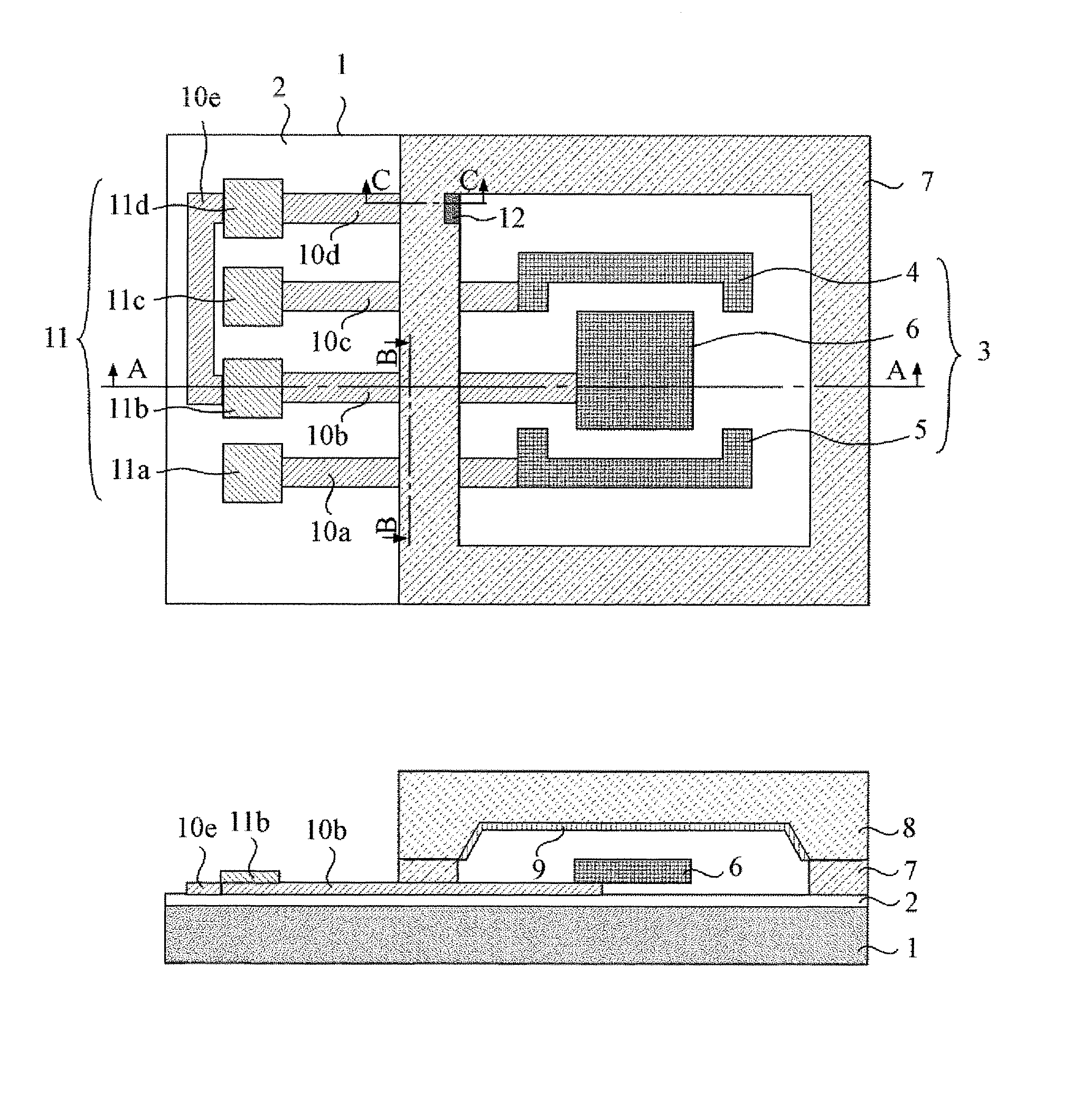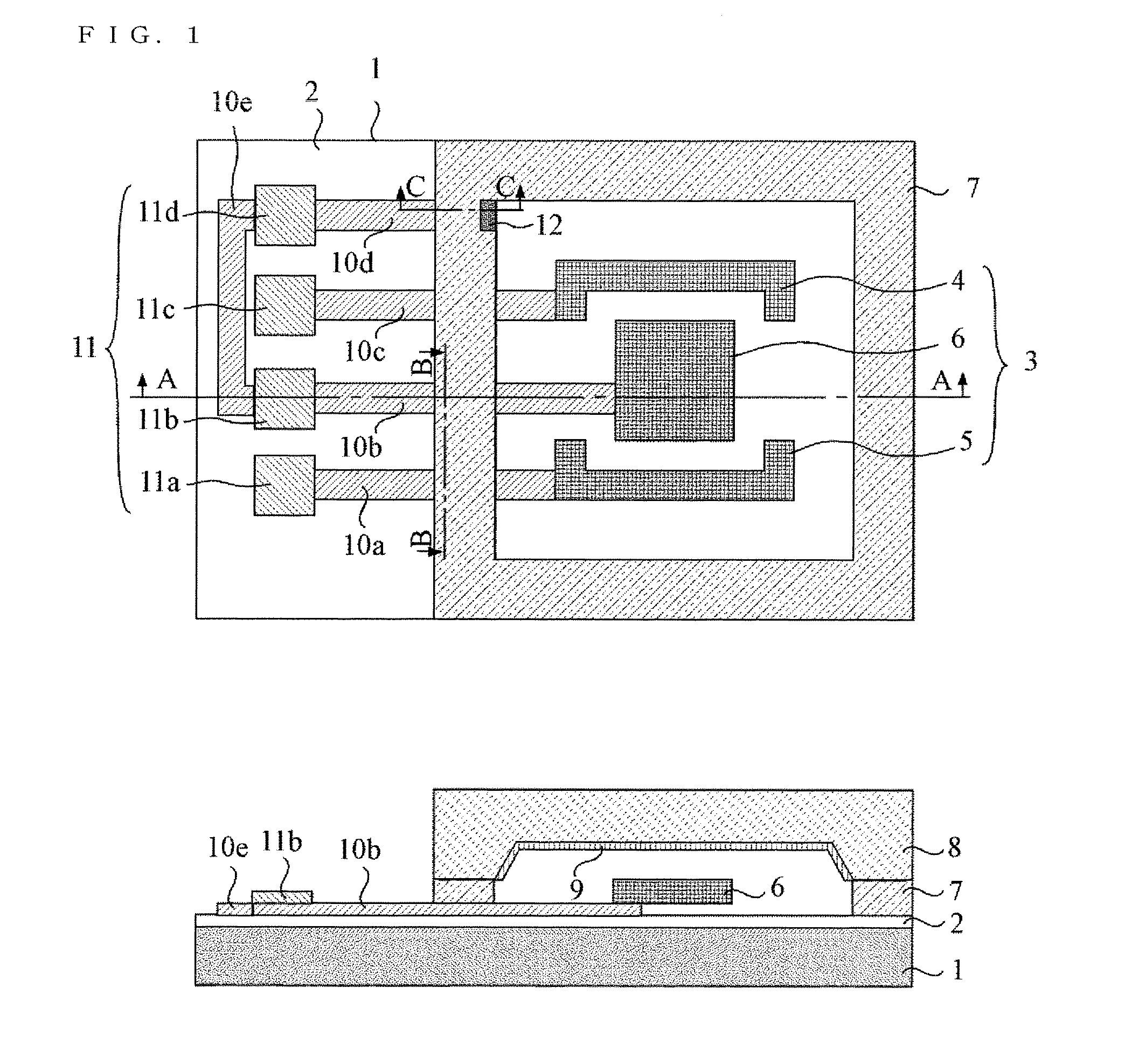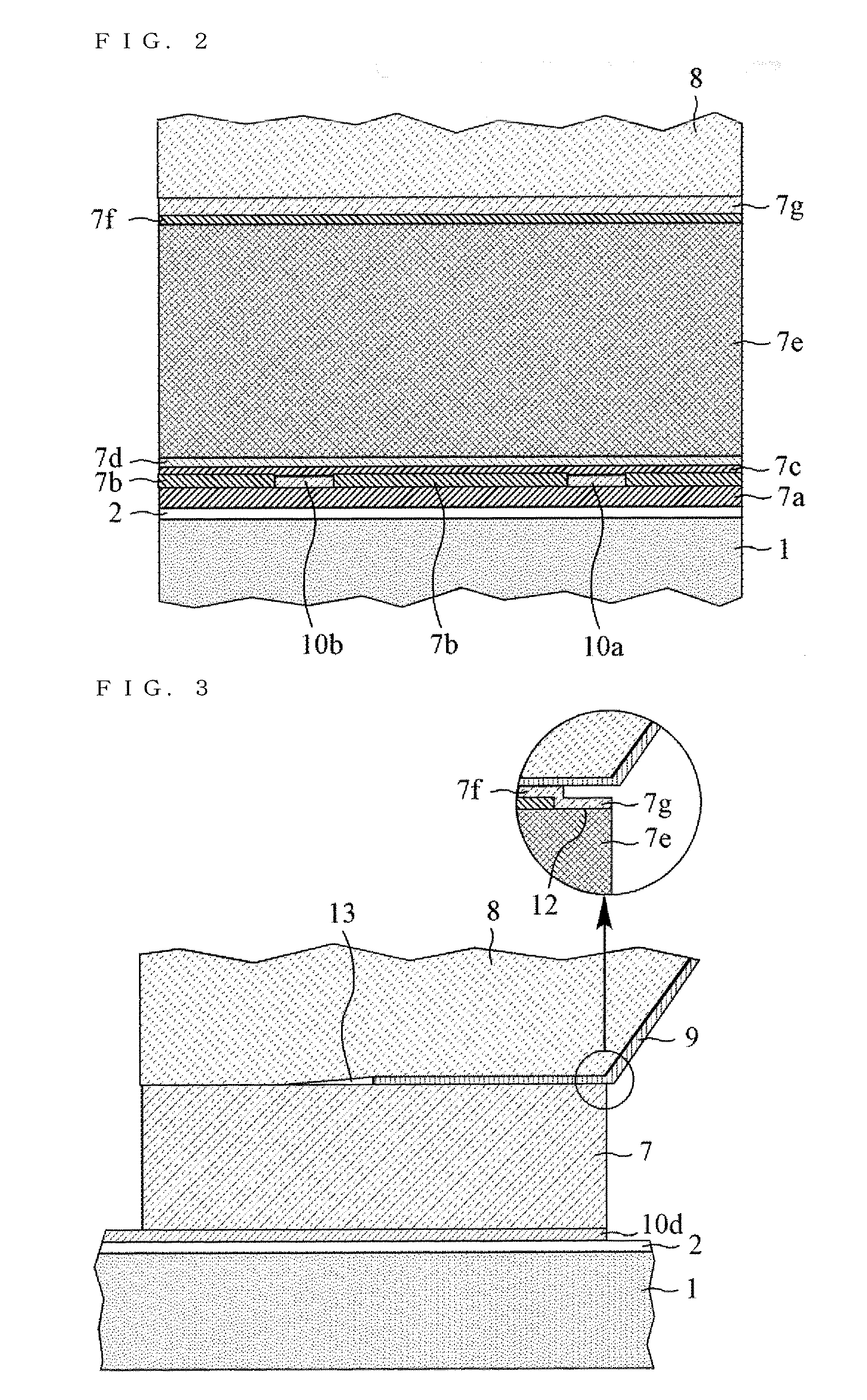Electrostatic-capacitance-type acceleration sensor
a technology of acceleration sensor and capacitor, which is applied in the direction of speed/acceleration/shock measurement device testing/calibration, instruments, etc., can solve the problems of limited flexibility in wiring design, prone to further expansion of irregularities, and inability to multi-layer wiring, so as to achieve the effect of preventing electric characteristics
- Summary
- Abstract
- Description
- Claims
- Application Information
AI Technical Summary
Benefits of technology
Problems solved by technology
Method used
Image
Examples
embodiment 1
[0022] Hereinafter, Embodiment 1 according to the present invention is explained based on figures. FIG. 1 is a plane view illustrating an acceleration sensor in Embodiment 1 according to the present invention, and a cross-sectional view along A-A of the plane view. Acap is conveniently omitted in the plane view.
[0023] In FIG. 1, a semiconductor substrate 1 made of silicon has two main opposing faces parallel to each other, in which the thickness of the substrate is 400 μm and the size thereof 2.25 mm×2.5 mm in rectangular shape. A heat oxide film 2 whose thickness is 1.6 μm is provided, for insulation, on the upper face of the semiconductor substrate 1. An acceleration detector 3 whose thickness is 8 μm is provided over the semiconductor substrate 1 sandwiching the heat oxide film 2. The acceleration detector 3 is composed of a first fixed electrode 4, a second fixed electrode 5, and a movable electrode 6; thereby, acceleration is detected from variation of the capacitance between ...
embodiment 2
[0031] In above Embodiment 1, because the shielding film 9 is sandwiched by the bonding frame 7 and the cap 8, due to the thickness of the shielding film 9 itself, as represented in FIG. 3, a region 13 exists in which the bonding frame 7 and the cap 8 are not bonded together. According to the experimental result by the inventors, the region 13 that is not bonded has been found to horizontally extend in a distance of 100-500 times as long as the thickness of the shielding film 9. For example, in above Embodiment 1, the distance reaches 10-50 μm. The thicker the shielding film 9 becomes, the wider becomes the region in which the bonding cannot be performed, which causes the width of the bonded region to correspondingly decrease; however, because the width that must be bonded is predetermined by the product strength, it is more preferable that the thickness of the shielding film 9 is thinner. On the other hand, in a case in which the shielding film 9 is made of metal such as aluminum o...
embodiment 3
[0033] Embodiment 3 is another embodiment also coping with the above conflicting matters, in which a detailed structure is illustrated in FIG. 5, and a cross-sectional view along C-C of FIG. 5 is illustrated in FIG. 6. In FIG. 5, the thickness of the shielding film 9 is 0.8 μm, and the other elements are the same as those in FIG. 1 illustrating the structure in Embodiment 1. FIG. 6 represents a bonding structure of the bonding frame 7 with the cap 8, in which part of the shielding film 9 is sandwiched between the bonding frame 7 and the cap 8. On the portion, in which the shielding film 9 is sandwiched, of the bonding frame 7, a nick 71 having a depth that is equivalent to or a little smaller than the thickness of the shielding film 9 is formed entirely along the edge the bonding frame 7. By structuring the bonding frame 7 as described above, it becomes possible to provide the shielding film 9 without restriction from the film thickness; therefore, not only sufficient bonding streng...
PUM
 Login to View More
Login to View More Abstract
Description
Claims
Application Information
 Login to View More
Login to View More - R&D
- Intellectual Property
- Life Sciences
- Materials
- Tech Scout
- Unparalleled Data Quality
- Higher Quality Content
- 60% Fewer Hallucinations
Browse by: Latest US Patents, China's latest patents, Technical Efficacy Thesaurus, Application Domain, Technology Topic, Popular Technical Reports.
© 2025 PatSnap. All rights reserved.Legal|Privacy policy|Modern Slavery Act Transparency Statement|Sitemap|About US| Contact US: help@patsnap.com



